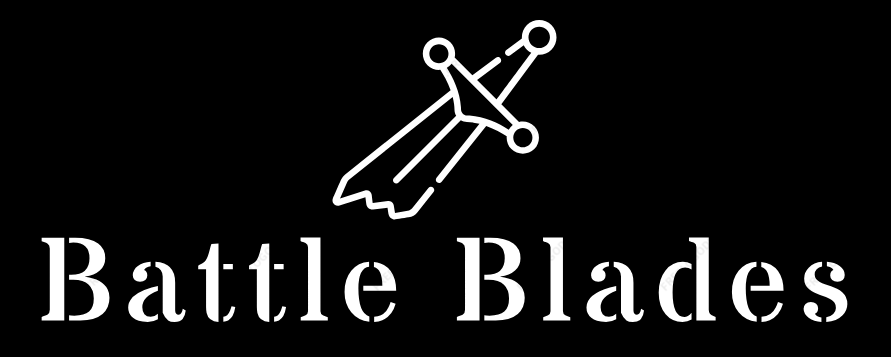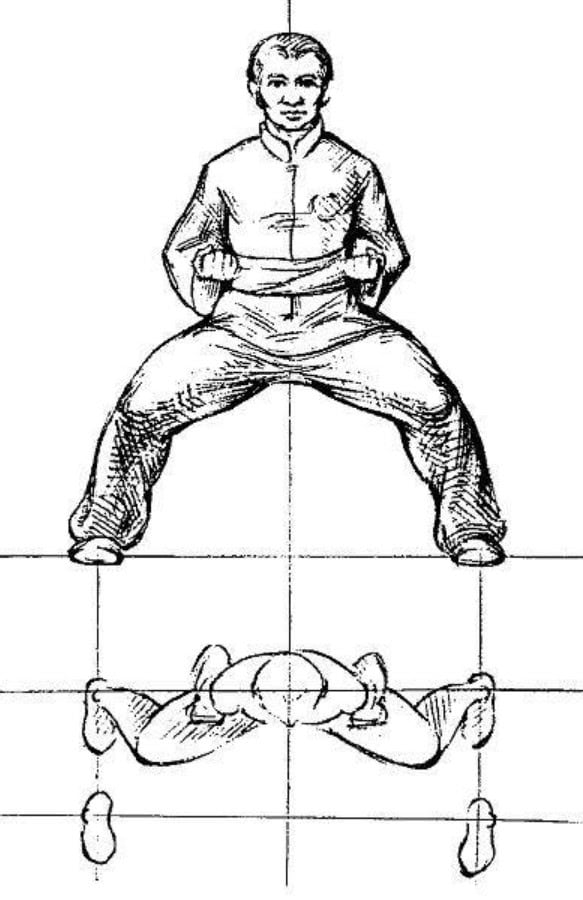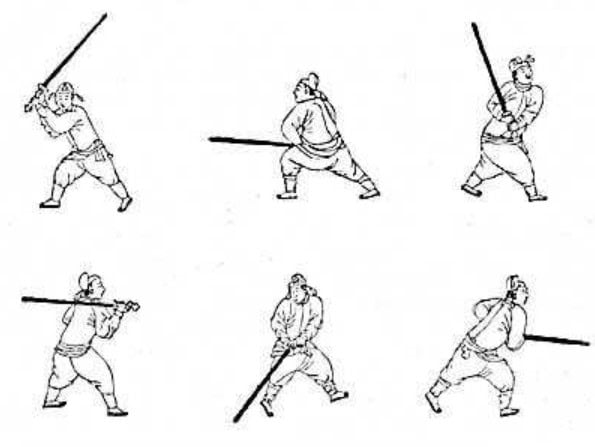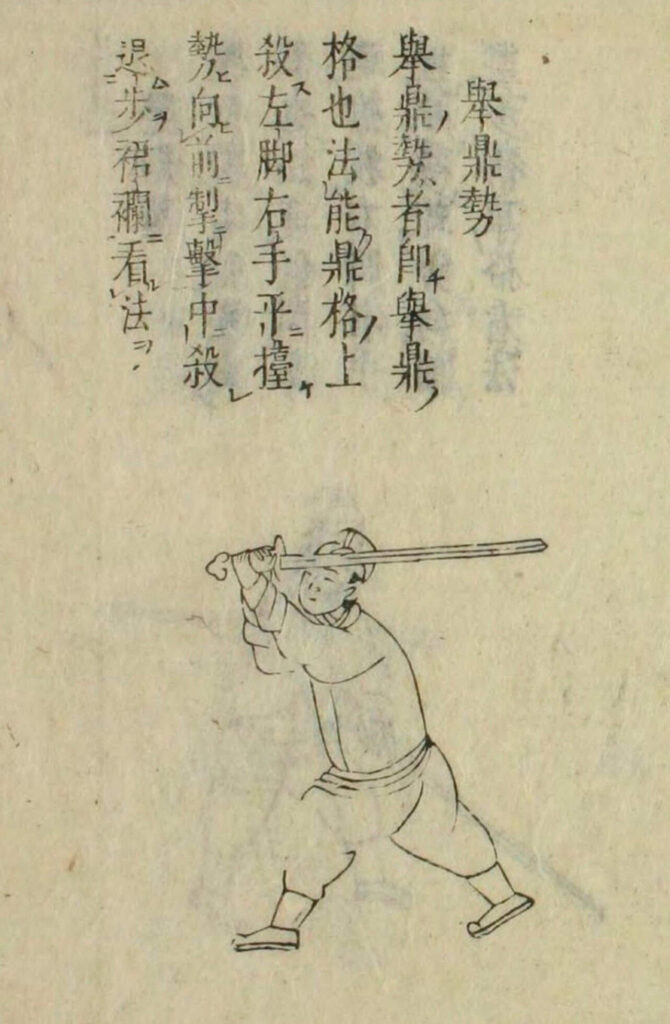Chinese Sword Stances and Movements
TLDR: This article covers essential Chinese sword stances, movements, and techniques, highlighting their roles in enhancing combat effectiveness and fluidity.
Chinese sword stances and movements are like a whole other world of martial arts! I’ve been diving into this stuff lately, and it’s just mind-blowing how intricate and diverse these techniques are. From the fundamental stances that form the backbone of swordsmanship to the specialized styles like Mao YuanYi’s two-handed techniques, there’s so much to explore. I’m not an expert by any means, but I can’t help but get excited about the way these stances and movements blend power, precision, and grace.
Introduction to Chinese Sword Stances and Movements
Chinese sword stances and movements form the bedrock of traditional Chinese swordsmanship, serving as the fundamental building blocks for mastering this ancient martial art. These stances and movements are not merely physical positions but embody centuries of martial wisdom, philosophy, and practical combat experience.
The importance of Chinese sword stances in swordsmanship cannot be overstated. They provide practitioners with a solid foundation for balance, power generation, and fluid movement. Each stance is carefully designed to optimize the swordsman’s body mechanics, allowing for efficient energy transfer from the ground through the body and into the sword. This efficiency is crucial in combat situations where split-second decisions and actions can mean the difference between victory and defeat.
Movements in Chinese swordsmanship are intrinsically linked to these stances, creating a dynamic system of combat techniques. These movements are not random or haphazard but follow specific principles that have been refined over generations. They include:
- Advancing and retreating
- Circular motions
- Straight thrusts
- Diagonal cuts
- Parries and deflections
The role of stances and movements in combat techniques is multifaceted. They serve both offensive and defensive purposes, allowing the swordsman to seamlessly transition between attacking and defending. A well-executed stance provides stability for powerful strikes while also enabling quick evasions. Movements, when properly integrated with stances, create a fluid and unpredictable fighting style that can confuse and overwhelm opponents.
Fundamental Chinese Sword Stances
Fundamental Chinese sword stances are essential for any practitioner looking to master the art of swordsmanship. Among these, the Ready Stance (Zhun Bei Shi) and Horse Stance (Ma Bu) stand out as foundational positions that provide the necessary balance, stability, and readiness for both offensive and defensive techniques. Understanding these stances is crucial, as they set the stage for more advanced movements and strategies in combat.
The Ready Stance (Zhun Bei Shi) is often considered the starting point for many forms of Chinese sword techniques. In this position, the practitioner stands with feet shoulder-width apart, knees slightly bent, and the sword held in a neutral position, typically at waist height or slightly raised. This stance allows for quick transitions into various strikes or defensive maneuvers. The body is aligned to maintain balance and readiness, ensuring that the practitioner can respond swiftly to an opponent’s actions. The importance of this stance lies in its versatility; it can easily morph into offensive strikes or defensive blocks without losing stability. Practicing this stance helps develop muscle memory, enabling smoother execution of techniques during sparring or combat scenarios.
In contrast, the Horse Stance (Ma Bu) is a more grounded position that emphasizes strength and endurance. This stance involves spreading the feet wide apart—typically about two shoulder widths—with toes pointed outward at a 45-degree angle. The knees are bent deeply, lowering the center of gravity while keeping the back straight. This position not only enhances stability but also builds leg strength and stamina over time. The Horse Stance is integral for developing a strong foundation in martial arts; it allows practitioners to maintain balance while executing powerful strikes or defending against attacks. Additionally, holding this stance for extended periods can improve mental focus and discipline, making it an essential training tool for martial artists.
| Stance | Key Characteristics | Benefits |
| Ready Stance | Feet shoulder-width apart, sword at waist | Versatile for quick transitions |
| Horse Stance | Wide stance, knees bent, low center of gravity | Builds leg strength and endurance |
Mao YuanYi’s Chinese Sword Stances
Mao YuanYi’s two-handed Chinese sword stances represent a unique and aggressive approach to martial arts, emphasizing powerful strikes and effective defensive techniques. The techniques outlined in his work, particularly the striking techniques (Ji) and the deflecting technique (Xi), are foundational for practitioners aiming to master the two-handed sword, or shuangshou jian. This style is characterized by its emphasis on strong postures, aggressive movements, and a focus on breaking through an opponent’s defenses.
Striking Techniques (Ji)
The striking techniques in Mao YuanYi’s system consist of a variety of movements that are designed to deliver powerful attacks while maintaining balance and control. Each technique has its own specific applications and advantages in combat situations. Here’s a closer look at some of these striking techniques:
- Left Wing (Zuo Yi): This technique involves a sweeping motion from the left side, designed to catch an opponent off guard while maintaining a strong defensive posture.
- Leopard Head (Bao Tou): A powerful downward strike that mimics the ferocity of a leopard, aimed at overwhelming the opponent.
- Straddle Right (Kua You): This movement allows the practitioner to step to the right while delivering a strong diagonal cut, effectively targeting an opponent’s upper body.
- Unfurl Flag (Zhan Qi): A dynamic technique that opens up the practitioner’s stance while executing a wide arc with the sword, creating opportunities for follow-up strikes.
- Stand Watch (Kan Shou): A defensive position that transitions smoothly into an offensive strike, allowing for quick reactions to incoming attacks.
- Drill Strike (Zuan): A thrusting motion that penetrates the opponent’s defenses directly, emphasizing speed and precision.
- Waist Strike (Yao): Often considered one of the most fundamental techniques, this full-body cleaving strike utilizes momentum from the hips to generate power.
- Unfold Wing (Zhan Chi): This technique involves extending the arms outward while preparing for a follow-up attack, maintaining balance and readiness.
- Right Wing (You Yi): Similar to the Left Wing but executed from the right side, this strike emphasizes agility and adaptability in combat.
- Uncovering Strike (Jie): A deceptive maneuver that aims to expose an opponent’s vulnerabilities while preparing for a counterattack.
- Straddle Left (Kua Zuo): Like Straddle Right, this technique allows for lateral movement while delivering a powerful horizontal cut.
- Lifting Strike (Xian): An upward motion designed to target an opponent’s head or upper body, creating openings for further attacks.
- Fold Wings (Lian Chi): A defensive technique that transitions into a counter-strike, showcasing fluidity in movement.
- Dash Across (Heng Chong): A rapid movement that allows the practitioner to close distance quickly while delivering a strike.
Deflecting Technique (Xi)
In addition to striking techniques, Mao YuanYi also emphasizes defensive maneuvers such as the Phoenix Head (Feng Tou). This technique is primarily used for deflecting incoming attacks while positioning oneself for a counterstrike. The Phoenix Head involves raising the sword above the head to intercept high strikes before transitioning into an offensive move.
| Technique | Description | Application |
| Left Wing | Sweeping motion from the left | Catching opponents off guard |
| Leopard Head | Powerful downward strike | Overwhelming attacks |
| Straddle Right | Diagonal cut while stepping right | Targeting upper body |
| Unfurl Flag | Wide arc motion with sword | Creating follow-up opportunities |
| Stand Watch | Defensive position transitioning to offense | Quick reactions |
| Drill Strike | Direct thrust | Speed and precision |
| Waist Strike | Full-body cleaving strike | Generating power |
| Unfold Wing | Extending arms outward | Maintaining balance |
| Right Wing | Agile strike from right side | Adaptability |
| Uncovering Strike | Exposing vulnerabilities | Preparing for counterattacks |
| Straddle Left | Horizontal cut while stepping left | Lateral movement |
| Lifting Strike | Upward motion targeting head | Creating openings |
| Fold Wings | Defensive transition into counter-strike | Fluidity in movement |
| Dash Across | Rapid closing distance with strike | Aggressive engagement |
Qingping Sword Style Chinese Sword Stances and Movements
The Qingping Sword Style is a captivating form of Chinese swordsmanship that emphasizes fluidity, agility, and strategic movement. This style incorporates a variety of stances and movements that allow practitioners to navigate combat scenarios with grace and precision. Among the most notable features of Qingping swordsmanship are its crossing movements, rapid turns with rising and falling motions, and the unique approach to advancing and retreating. These techniques not only enhance the effectiveness of the swordplay but also embody the principles of balance and adaptability that are central to martial arts.
Crossing Movements
One of the defining characteristics of Qingping swordsmanship is its use of crossing movements. In this context, crossing refers to a coordinated action where the sword moves in one direction while the body and legs shift in another. This creates a dynamic interplay between offense and defense, allowing practitioners to evade attacks while simultaneously positioning themselves for counterstrikes. The elegance of these movements lies in their unpredictability; by moving in unexpected directions, a practitioner can confuse an opponent and create openings for attack.
Rapid Turns with Rising and Falling Motions
Another essential aspect of Qingping sword stances is the incorporation of rapid turns combined with rising and falling motions. These movements are designed to keep opponents off balance while allowing the practitioner to maintain control over their own body dynamics. The ability to quickly change direction is crucial in combat, as it enables the swordsman to adapt to their opponent’s actions effectively. This fluidity can be observed in how practitioners execute strikes that rise high before dropping low, or vice versa, making it difficult for opponents to predict their next move.
Retreating to Advance
The concept of retreating to advance is a unique tactical approach within Qingping swordsmanship. Rather than simply moving backward to evade an attack, practitioners utilize this movement as a strategic maneuver to create distance while preparing for a counterattack. By retreating, they can draw their opponent in, creating an opportunity for a sudden offensive strike as they regain their footing. This technique emphasizes the importance of timing and spatial awareness in combat situations.
Advancing to Retreat
Conversely, advancing to retreat involves moving forward into an opponent’s space only to quickly change direction and evade an attack. This technique allows practitioners to engage their opponents while maintaining the ability to escape if necessary. It reflects a deep understanding of distance management and showcases the adaptability required in Qingping swordplay.
| Movement Type | Description | Key Benefit |
| Crossing Movements | Sword moves one way while body/legs move another | Creates unpredictability in attacks |
| Rapid Turns | Quick directional changes with rising/falling motions | Keeps opponents off balance |
| Retreating to Advance | Moving back strategically before counterattacking | Draws opponents into striking range |
| Advancing to Retreat | Engaging forward then evading quickly | Enhances distance management |
Additional Chinese Sword Movements and Techniques
The world of Chinese swordsmanship is rich with diverse techniques that enhance both offensive and defensive capabilities. Among these, the additional Chinese sword movements and techniques stand out for their practicality and adaptability in various combat scenarios. Each technique serves a specific purpose, allowing practitioners to respond effectively to different situations while maintaining fluidity and control.
Lift and Carry
The Lift and Carry technique is primarily used as a defensive maneuver against overhead strikes. In this movement, the practitioner raises the sword above the head to intercept an incoming attack, effectively using the sword’s blade to deflect the blow while positioning themselves for a counterattack. This technique emphasizes the importance of timing and body alignment, as the practitioner must be ready to transition quickly into offensive actions once the initial threat is neutralized.
Skirt Block
The Skirt Block is a versatile technique designed to protect the lower body. When an opponent targets the legs or lower torso, this movement involves lowering the sword and sweeping it horizontally across the body to intercept attacks aimed at these vulnerable areas. The Skirt Block not only serves as a defensive action but also sets up opportunities for counterattacks by creating openings in the opponent’s stance.
Dot Sword
The Dot Sword technique focuses on precision strikes aimed at specific targets on the opponent’s body. This movement involves a quick thrusting motion, typically directed towards vital points such as the throat or abdomen. The emphasis here is on speed and accuracy, making it essential for practitioners to develop their reflexes and hand-eye coordination.
Driving the Cart
Driving the Cart is a technique that combines forward movement with a powerful downward strike. Practitioners execute this movement by stepping forward while bringing the sword down in a chopping motion, simulating the action of driving a cart forward. This technique is effective for breaking through an opponent’s defenses while maintaining momentum.
Scale the Fish
The Scale the Fish technique emphasizes agility and deceptive movements. It involves quick lateral shifts that mimic the unpredictable motions of a fish swimming through water. This technique allows practitioners to evade attacks while positioning themselves for counterstrikes, making it difficult for opponents to predict their next move.
Tip Flick
The Tip Flick is a subtle yet effective technique used to create openings during combat. By flicking the tip of the sword in a quick, upward motion, practitioners can disrupt an opponent’s guard or create space for follow-up strikes. This movement requires precision and timing to be executed effectively.
Expose Belly
The Expose Belly technique involves intentionally lowering one’s guard to bait an opponent into attacking, only to quickly counterattack as they commit to their strike. This deceptive maneuver relies on psychological tactics as much as physical skill, showcasing the importance of mental acuity in combat.
Lift and Pass
In Lift and Pass, practitioners lift their sword high before passing it over their opponent’s blade in a sweeping motion. This technique not only serves as a defensive action but also creates opportunities for immediate counterattacks, allowing for fluid transitions between defense and offense.
Silver Python
The Silver Python technique emphasizes fluidity and adaptability in movement. Practitioners execute this maneuver by weaving their sword in circular patterns, creating deceptive angles that can confuse opponents while setting up for powerful strikes.
Whirl Wind
The Whirl Wind technique involves rapid spinning movements that allow practitioners to evade attacks while simultaneously preparing for counterstrikes. This dynamic motion enhances agility and can catch opponents off guard due to its unpredictability.
Raise the Cauldron
The Raise the Cauldron technique serves as both a defensive posture and an offensive strike. By raising the sword overhead in preparation for an incoming attack, practitioners can parry blows while simultaneously positioning themselves for a downward strike.
Left Clamp
The Left Clamp is used to control an opponent’s weapon by applying pressure from one side while preparing for a follow-up attack from another angle. This technique showcases strategic thinking, as it requires practitioners to anticipate their opponent’s moves.
Double Shear
In Double Shear, practitioners execute simultaneous strikes with both hands, targeting multiple areas of an opponent’s body at once. This technique emphasizes coordination and timing, allowing practitioners to overwhelm their opponents with rapid attacks.
Right Clamp
Similar to Left Clamp, the Right Clamp applies pressure from the opposite side to control an opponent’s weapon while preparing for a counterattack or follow-up move.
| Technique | Description | Key Benefit |
| Lift and Carry | Defensive maneuver against overhead strikes | Effective parry with counter potential |
| Skirt Block | Horizontal sweep to protect lower body | Versatile defense with counter options |
| Dot Sword | Precision thrusts aimed at vital points | Speed and accuracy |
| Driving the Cart | Forward step with downward strike | Momentum generation |
| Scale the Fish | Lateral shifts mimicking fish movements | Evasion with counter opportunities |
| Tip Flick | Quick upward flick of sword tip | Disruption of opponent’s guard |
| Expose Belly | Baiting attack followed by immediate counterattack | Psychological deception |
| Lift and Pass | Lifting then sweeping over opponent’s blade | Fluid transition between defense/offense |
| Silver Python | Circular weaving motions | Confusing angles for strikes |
| Whirl Wind | Rapid spinning movements | Enhanced agility |
| Raise the Cauldron | Overhead guard transitioning into attack | Dual-purpose action |
| Left Clamp | Control of weapon from one side | Anticipatory strategy |
| Double Shear | Simultaneous strikes targeting multiple areas | Overwhelming attacks |
| Right Clamp | Control from opposite side | Strategic positioning |
What truly captivates me about these additional Chinese sword movements is how each one embodies both creativity and practicality in combat situations. The Lift and Carry feels like such an elegant way to deflect an attack while being prepared for your own response; I can almost visualize how satisfying it must be when executed flawlessly!
Final Thoughts
What a journey through the world of Chinese sword stances and movements, right? I gotta say, the more I learn about this stuff, the more I’m blown away by the depth and complexity of it all. From the Qingping style’s mind-bending crossing movements to the body-driven techniques of the Long Saber, it’s clear that Chinese swordsmanship is an art form in its own right. I mean, who knew there were so many ways to wield a sword? It’s not just about swinging a blade; it’s about becoming one with the weapon and understanding the types of Chinese swords that shape these intricate techniques. Sure, I’m no master swordsman, but I can’t help feeling a deep appreciation for the skill and dedication it takes to master these styles.



